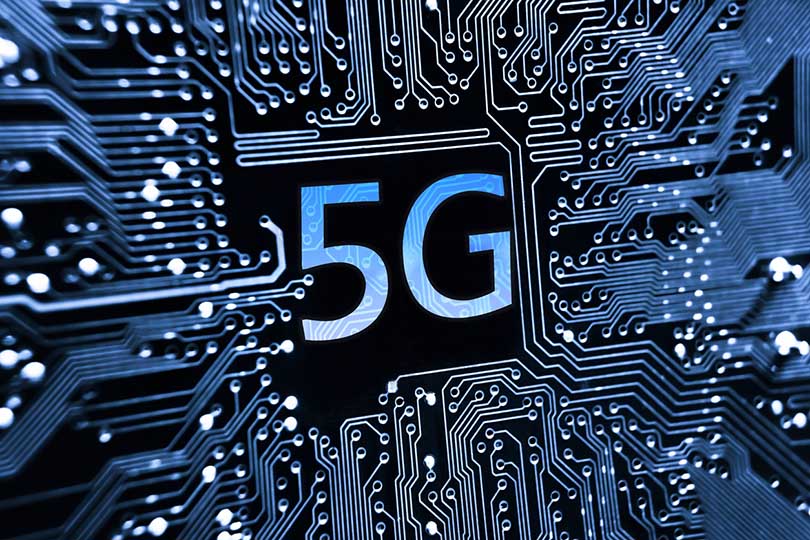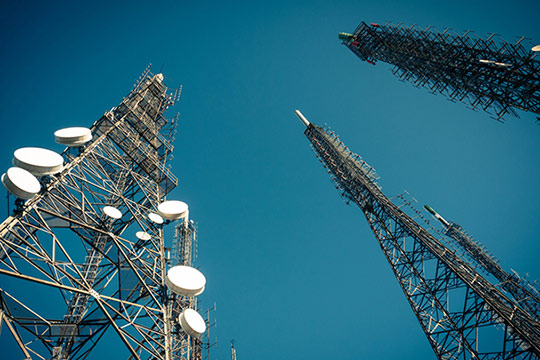TECHNOLOGY FOCUS
LTE and LTE-Advanced is THE global standard for 4G mobile broadband systems. LTE-Advanced Pro will pave the way towards future 5G systems. The continued growth of wireless data requires enhancement in spectrum efficiency, in the use of small cells and additional frequency bands (unlicensed and shared bands or very high frequencies).
LTE-Advanced Pro addresses complete new markets with new systems for Internet of Things, Public Safety, Car-to-Car communication, future Broadcast Systems as well as wearable devices. Actually the first phase of 5G can only be operated with an LTE-Advanced Pro eNB using Dual Connectivity


COURSE CONTENT
Starting from the fundamentals of LTE and LTE-A, this training course introduces comprehensive functionality as defined in the latest LTE specifications (Rel. 12, Rel. 13 as well as current Rel.14). Techniques like Dual Connectivity that enable the deployment of dense small cells in a reliable way are explained as well as new techniques like LTE License Assisted Access (LTE-Unlicensed) and LTE / WLAN Radio Level Aggregation that leverage the use of the unlicensed spectrum using LTE or WiFi.
There are also complete new systems defined for LTE Broadcast (LTE-B), LTE for Public Safety and Car-to-Car Communication (LTE-V), LTE Machine Type Communication (MTC) as well as Narrowband Internet of Things for the growing Internet of Things market. Some of these systems include significant changes to the radio access, like direct (or Device-to-Device) communication, proximity discovery or relay functionality, which are required for future Public Safety systems and also for Vehicle to X communication.
The new standards for the Internet of Things include technologies for extreme coverage extension and indoor penetration as well as for ultra-low battery consumption. Overall, the new LTE-Advanced Pro standard is likely to meeting most of the requirements that are defined for 5G. Based on the shortcomings of LTE-Advanced Pro an outlook towards future 5G access networks is provided.
WHO SHOULD ATTEND
The course is suitable for persons who already work with 2G/3G or 4G systems and are interested in future evolution of LTE and LTE-Advanced towards 5G. It is held by a technical expert in the field that is directly involved in 3GPP standardization and provides hands-on up to date background information of the latest trends.
It is suitable for all kind of engineers from research, development, planning, deployment and operation as well as executives, managers and system architects.
Any pre-existing knowledge of LTE technology and LTE-Advanced will deepen the understanding of the technical details of LTE-Advanced Pro.

Day 1
LTE / LTE-Advanced Introduction
- OFDMA and SC-FDMA Radio Access Technology
- Key Technologies: MIMO, Link Adaptation, Scheduling Concepts
- Up- and Downlink Transport Channels and Physical Channels
- Carrier Aggregation, Advanced MIMO, HetNet etc.
- Timeline and Status of the LTE-A and LTE-A Pro Standard
From Carrier Aggregation (CA) to Dual Connectivity (DC)
- CA Concepts and Carrier Handling (PCell, SCell, scheduling etc)
- Evolution of CA (FDD/TDD CA, CA with up to 32 carriers etc.)
- Overview of the DC Concept and Split of Functionality
- Control Plane and User Plane Architecture • RRC Configuration and Split Bearer
- DC Network Procedures
LTE Unlicensed / LTE License Assisted Access (LAA)
- Unlicensed versus Licensed Spectrum
- Licensed Assisted Access (LAA) Techniques and Concepts
- Listen-Before-Talk and Channel Access Procedures
- Scheduling Principles and Hybrid ARQ for LAA
- Radio Resource Management (Carrier Identification, Selection etc.)
LTE-WiFi Radio Level Aggregation (LWA)
- LWA Architecture, Protocol and Bearer Types
- LTE/WLAN Aggregation (LWA) concepts
- User Plane Architecture and Xw-interface for LWA
- Mobility Principles and Network Procedures
- Comparison LAA versus LWA
- Other options for LTE/WiFi integration
Day 2
LTE Broadcast / Multicast Techniques and Future Terrestrial TV
- Enhanced Multimedia Broadcast Multicast (eMBMS)
- Physical Broadcast Channel with Single Frequency Network Operation
- Single Cell Point to Multipoint Transmission
- eMBMS Nodes, Interfaces and Procedures
- eMBMS for High Tower / High Power Digital Terrestrial TV
Discovery and Device to Device (D2D) for Proximity Services
- D2D Synchronization, Direct Discovery and Direct Communication
- D2D Deployment Scenarios and Uplink Access Scheme
- ProSe Configuration, UE Capabilities and Terminal Types
- Details for Sidelink Physical Channel and Transport Channel
- Configuration and Scheduling Procedures
LTE based Public Safety Systems
- Public Safety / Mission Critical Communication
- Requirements, Spectrum and Deployment Scenarios
- Specific Public Safety functions like UE-to-Network Relay
- Overview of Public Safety Features and Future Standardization
Vehicle to Vehicle (V2V) Services
- V2X Applications (V2V, V2P, V2I etc), Scenarios and Requirements
- V2X Spectrum and Coexistences with other Technologies (e.g. DSRC)
- Sidelink Scheduling Enhancements for V2V Applications
- Enhancements of Semi-Persistent Scheduling and QoS
- Geo Location Aware Broadcast and Scheduling
Day 3
LTE Machine Type Communication for Internet of Things, IoT
- Introduction of MTC, Use Cases and Requirements
- Overview M2M and IoT Systems and Market
- Low Complexity MTC UE Cat-0
- Extended DRX and UE Power Saving Mode
- 1.4 MHz Low Bandwidth Enhanced MTC System
- Improved Link Budget by Coverage Enhancement Mode
- Enhancements of Physical Channels to support eMTC
Narrowband Internet of Things, NB-IoT
- Target Scenarios: In-band, Guard Band and Stand-Alone
- Downlink- and Uplink Physical Layer Access Schemes for NB-IoT
- Overview of LTE System Enhancements to support NB-IoT
- Procedure for System Information, Random Access, Scheduling
- Comparison of MTC/IoT Terminal Capabilities
Overview of Releases and UE Capabilities
- Release overview LTE, LTE-Advanced and LTE-Advanced Pro
- UE Capability Exchange
- Peak Data Rate Evolution Outlook to 5G Radio Technology
- Industry Trends, Requirements and Standardization Schedule
- 5G Spectrum and Channel Conditions at Very High Frequencies
- 5G Wave Form and Radio Access
- Numerology and Radio Frame Structure
- Key Concepts of 5G •
- Migration from LTE to 5G Radio Access Networks
Said about the course from previous participants:
"The lecture style was perfect, handouts has very high quality, very skilled and experienced lecturer."
"Good overview over all aspects of LTE: architecture, technologies used, channels, layers."
"Diversity of discussions issues were very good, as well as the organization of the course and the time frame."
See interesting links to white papers co-authored by Mr Eiko Seidel, related to the course content: 5G Radio Access Technology
http://www.nomor.de/home/technology/3gpp-newsletter/2017-08:-5g-frame-structure
http://www.nomor.de/home/technology/white-papers/dynamic-tdd
http://www.nomor.de/home/technology/white-papers/dense-5g-networks
http://www.nomor.de/home/technology/3gpp-newsletter/2017-03%3A-3gpp-5g-ran-study-completed
http://www.nomor.de/home/technology/3gpp-newsletter/2017-01:-3gpp-5g-ran-adhoc-ran-functional-split

